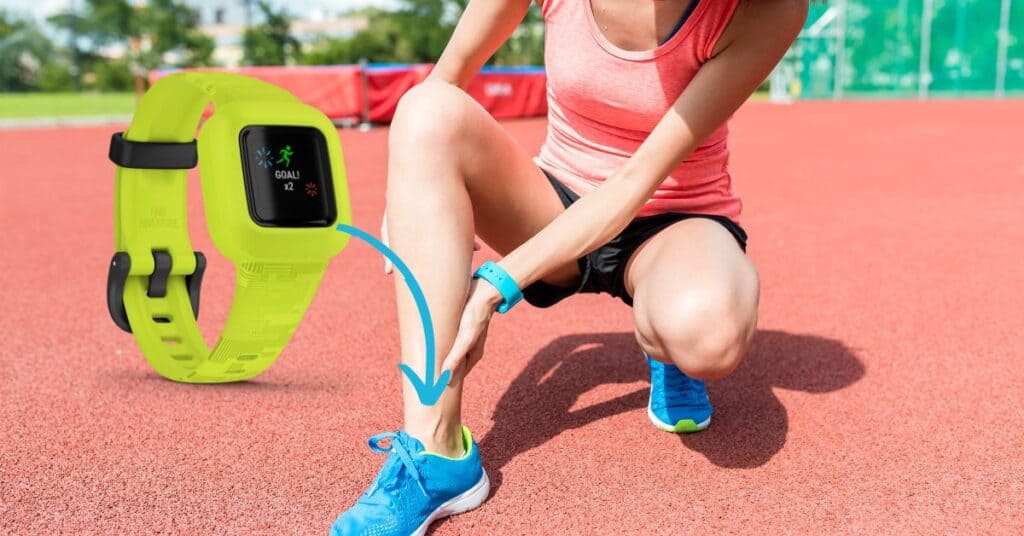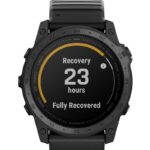Wearing a Garmin Watch on Your Ankle: Is it Possible and Safe?
Want your smartwatch to be as accurate as it can be in its step count measurement? If so, you might be wondering, ‘can I wear my Garmin watch on my ankle?’

Yes, you can. There is no major harm in wearing your Garmin watch on the ankle. As a matter of fact, it is actually great for tracking and monitoring your activities throughout the day. It gives you an accurate picture of how much exercise you are getting, helping you stay active and healthy.
I interviewed a number of Garmin users about their experiences with wearing their Garmins on their ankles before writing this piece.
Can I Wear My Garmin Watch On My Ankle?
Yes, you can. There is no major harm in wearing your Garmin watch on the ankle. As a matter of fact, it is actually great for tracking and monitoring your activities throughout the day. It gives you an accurate picture of how much exercise you are getting, helping you stay active and healthy.
Wearing a Garmin watch on the ankle also helps to provide helpful data, that is more accurate, on movements like running or cycling, as it takes into account the angle of movement as well. A garmin, usually, does not record this data when you’re wearing it on your wrist.
With that said, there are some potential drawbacks to wearing a Garmin watch on the ankle too. Depending on where you wear it or how tight the anklet is, it may cause chafing or discomfort if worn for long periods of time.
There is a slight risk of the device falling off if it is not secured properly as well. And then, tracking accuracy can also be negatively impacted if the anklet or strap shifts or slips during activity.
How Do I Wear Garmin Watch On Ankle?
Prior to wearing your Garmin watch on the ankle, you should make sure that it fits correctly. My advice is that you purchase a band size that is appropriate for your ankle’s circumference. You can get this information in the product instructions.
The band will also need to be adjusted so that it fits in a manner that is comfortable around your ankle. Then, you will need to attach the watch to the band, making sure that it is secure and does not move while you are active.
With all that done, you should ensure that your prized device is set up correctly to track your activity. You may want to adjust certain settings or preferences, depending on how you wish to use the watch. By this, I mean your step count goals and calorie burn targets.
Depending on the model you have on you, specific activity-tracking features may also be available to you, like running mode or cycling mode. These features can help optimize the accuracy of the device depending on which type of physical activity you’re doing.
Where Should I Wear My Garmin Watch?
The best position for wearing your Garmin watch, arguably, of course, is on the inside of your wrist. I feel that way as it not only allows you to easily read and access the data displayed on the watch face, but provides you with more accurate readings as well.
What’s more is that it helps keep your movements from interfering with capturing any necessary information while tracking activities, including running, cycling, or swimming.
It is important, though, that you are wearing your watch on the inside of your wrist correctly to reap its benefits. To do that, make sure it is snug but not too tight so that it does not become uncomfortable when you go about using it for long durations.
Also, make sure that the band is secured properly so that it does shift or slip when you’re training or exercising. Another piece of advice that I recommend you take from me is that if the weather is extreme (in either direction), do make sure that the material of the band you are using is breathable and sweat-resistant to avoid irritation and discomfort.
Does Garmin Count Steps If In Pocket?
Yes, most Garmins do. The watches that are equipped with Auto Step Counting feature count your steps even if the watch is inside your pocket.
The technology that this above-mentioned feature uses relies upon motion sensors that detect when your body moves. It then calculates how many steps you have taken. The accuracy of the data depends on how closely the sensor matches up with your movements, but normally, it is pretty accurate.
Should I Wear My Garmin Watch On The Inside Of My Wrist?

The answer to this question eventually depends on your personal preferences. For some people, wearing the watch with the display facing inwards creates a more comfortable and less obtrusive experience. Some people (me included) think that it is more discreet and better for activities like business meetings or formal occasions.
How Tight Should I Wear My Garmin Watch?
Your Garmin watch should be tight enough so that it gives an accurate reading, but it should not be too tight as you don’t want it to be uncomfortable. Generally, you should wear the watch like a bracelet > snugly but not too tightly.
The best way to test this is by pressing one finger in between the watch and your wrist. If you find that there is space for one finger, the fit is right.
Another pro tip: Make sure the band is not twisted when you put it on. It should lay flat against your skin for proper contact with sensors and maximum accuracy in readings.
Key Takeaways
- You can wear your Garmin watch on the ankle.
- There are some potential drawbacks as well as benefits to it.
- Make sure to purchase a compatible anklet or strap.
- The best position for wearing a Garmin: Inside of your wrist.
- Many Garmin watches count steps even if they are in your pocket.
- A Garmin should be tight enough to get an accurate reading.
- But it should not be so tight that it feels uncomfortable.
